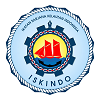APPLICATION OF GIS FOR ASSESSING PRAWN FARM DEVELOPMENT IN TULLY-CARDWELL, NORTH QUEENSLAND
Abstract
In recent years, Geographical Information Systems (GIS) has been employed for various studies in aquaculture where geographical factors, natural resources and human activities are involved. With an adequate database GIS, can serve as powerful tools in aquaculture. GIS have capabilities of organizing, analyzing, and displaying large, spatially explicit datasets due to spatial nature of the factors involved in aquaculture development particularly for site suitability studies. This study is intended to become a preliminary investigation for the development of prawn farm in Tully-Cardwell region of North Queensland. The aim of this research is to identify suitable sites for development of prawn farming using GIS multi-based criteria based on the basic requirements for prawn farming, for instance: suitable elevation and slope, proximity to water and distance from urban areas.
Key words: Geographical Information Systems (GIS), Tully Cardwell, North Queensland, Prawn farm
Full Text:
PDFReferences
Beveridge, C. M., Pérez, O. M., Telfer, T. C., & Ross, L. G. (2002). Geographical information systems (GIS) as a simple tool to aid modeling of particulate waste distribution at marine fish cage sites. Estuarine, Coastal and Shelf Science, 54, 761-768
Bush, S. R. (2003). Using a Simple GIS Model to Assess Development Patterns of Small-scale Rural Aquaculture in the Wider Environment (Vol. 12010210): Aqua KE Government Documents
Dasguppta, S. (2005). Economics of fresh water prawn farming in the United States. SRAC Publication, 4830, 1- 8
Giap, D. H., Yi, Y., Cuong, N. X., & Diana, S. J. (2003). Application of GIS and Remote Sensing for Assessing Watershed Ponds for Aquaculture Development in Thai Nguyen, Vietnam, Map Asia Conference, 2003. Bangkok: Pond/Aquaculture Dynamic Collaborative Research Program
Queensland Government. (2006). Wet Tropical Coast - North Queensland - Cardwell/Tully/Innisfail Area (CTI): Dataset description. Departement of Natural Resources and Water (Ed.)
Hossain, M. A., Chowdhury, S. R., Das, N. G., & Rahaman, M. M. (2007). Multi-criteria evaluation approach to GIS-based landsuitability classification for tilapia farming in Bangladesh. Aquacult Int ,15, 425- 443
McLeod, I., Pantus, F., & Preston, N. (2002). The use of geographic information system for land-based aquaculture planning. Aquaculture Research, 33, 241-250
Nath, S. S., Bolte, J. P., Ross, L. G., & Aguilar-Manjarrez, J. (2000). Applications of geographical information systems (GIS) for spatial decision support in aquaculture. Aquacultural Engineering, 23, 233-278
Pérez, O.M., Telfer, T.C., and Ross, L.G. 2003. Use of GIS-based models for integrating and developing marine fish cages within the tourism industry in Tenerife (Canary Islands). Coastal Management, 31,355-366
Pérez, O. M., Ross, L. G., Telfer, T. C., & del Campo Barquin, L. M. (2003). Water quality requirements for marine fish cage site selection in Tenerife (Canary Islands): predictive modeling and analysis using GIS. Aquaculture, 224, 51-68
Ross, L. G., & Aguilar-Manjarrez, J. (1993). Aquaculture development and Geographical Information Systems in the Institute. Aquaculture News, 16, 14-15
Salam, M. A., Rossa, L. G., & Beveridge, C. M. (2003). A comparison of development opportunities for crab and shrimp aquaculture in southwestern Bangladesh, using GIS modelling. Aquaculture, 220, 477-494
Subasinghe, S. 1999. Chtitin from Shellfish Waste-Health Benefits Over Shadowing Industrial Uses. Infofish International. No 3: 58-65.
DOI: https://doi.org/10.21107/jk.v4i2.882
Refbacks
- There are currently no refbacks.

Jurnal Kelautan by Program Studi Ilmu Kelautan is licensed under a Creative Commons Attribution 4.0 International License.
Published by: Department of Marine Sciences, Trunojoyo University of Madura













